Disclaimer: We sometimes use affiliate links in our content. For more information, visit our Disclaimer Page.
Sales are the lifeblood of any business, and it’s crucial to keep a close eye on performance. Monitoring sales is about tracking revenue and measuring key performance indicators (KPIs) to get a clear picture of your sales performance and identify areas for improvement.
This blog post will cover how to measure KPIs and provide an overview of the 4 best sales tracking software to help you track your sales performance.
Measuring Sales Performance with KPIs
KPIs are the metrics used to track the performance of a business. When it comes to sales, some common KPIs include the number of sales, revenue, lead conversion rate, and more. To measure your sales performance with KPIs, follow these steps:
- Identifying KPIs: Start by identifying what is important to your business. This will help you focus on the most important metrics and ignore the ones that are not relevant.
- Setting Sales Targets: Set realistic sales targets that align with your business goals. This will give you a clear picture of your sales performance over time and help you stay focused on what is important.
- Tracking Progress: Regularly track your KPIs to see if you are on track to reach your sales targets. This will help you identify areas for improvement and make adjustments as needed.
Related: Sales Mix
Why is Monitoring Sales Performance Important?
Sales performance monitoring is critical to any business as it provides valuable information to help drive success. Companies can gain insights into their operations, customer behavior, and overall success by closely monitoring sales performance. The following are some of the critical benefits of monitoring sales performance:
- Improving Business Decision-Making: Sales performance monitoring provides essential data for making informed decisions on business strategy, operations, and finances.
- Identifying Trends and Issues: Monitoring sales performance can help identify trends and potential issues, such as declining sales or underperforming areas, allowing corrective action to be taken.
- Measuring Success and Setting Goals: By tracking sales performance, businesses can measure their success, set achievable goals, and determine areas for improvement.
- Understanding Customer Needs: Sales performance monitoring provides insight into buying habits, preferences, and behavior, allowing for better alignment of products and services to meet customer needs.
- Allocating Resources Efficiently: Sales performance data can inform resource allocation decisions, such as sales team investments, product development, and marketing efforts.
Related: Sales Strategies
Best Sales KPIs – Track Your Performance with Metrics
Sales KPIs, or Key Performance Indicators, are essential metrics that help businesses measure the success and efficiency of their sales operations. By tracking the right KPIs, businesses can identify areas of improvement and make informed decisions to drive sales growth.
Key Sales KPIs
- Number of Sales: Tracks the total number of sales made in a given period.
- Conversion Rate: Measures the percentage of leads that become customers.
- Average Deal Size: Calculates the average amount of money generated per sale.
- Lead-to-Customer Ratio: Tracks the ratio of leads to actual customers.
- Sales Cycle Length: Measures the time from initial lead engagement to close.
Setting Up Sales Dashboards
- Identifying Relevant Metrics: Determine which KPIs are most relevant to your business and sales goals.
- Data Collection and Integration: Gather data from various sources and integrate it into a single platform.
- Visualizing Data in Dashboards: Present data in clear and easy-to-understand visualizations, such as charts and graphs.
Measuring and Analyzing Sales KPIs
- Regular Monitoring: Continuously monitor KPIs to identify trends and patterns in sales performance.
- Identifying Trends and Patterns: Analyze data to identify trends or patterns in sales performance.
- Adjusting Sales Strategies: Use insights from KPI analysis to make informed decisions and adjust sales strategies for maximum efficiency and effectiveness.
What is a Sales Monitoring System
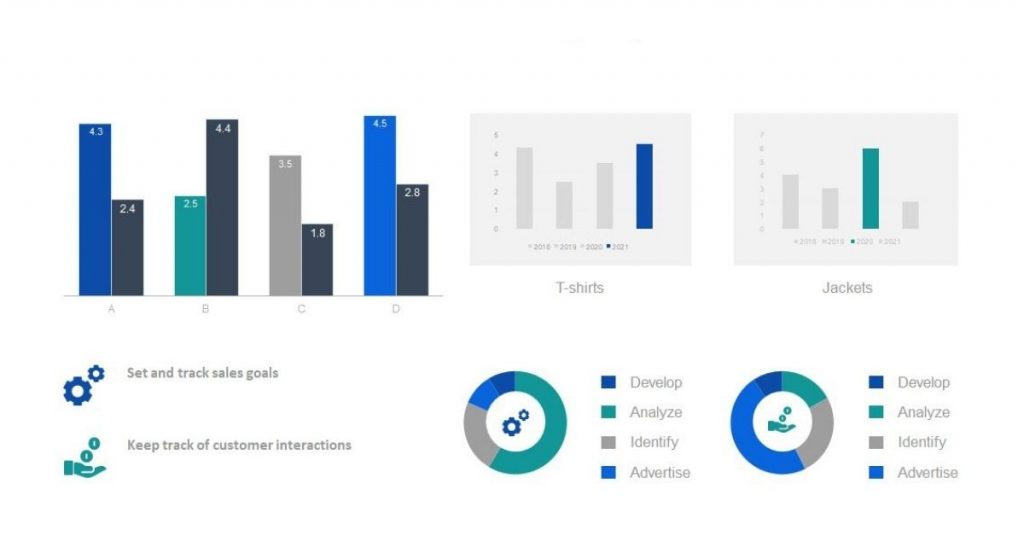
A sales monitoring system is software that helps businesses track and analyze their sales performance. It typically includes sales tracking, real-time sales data, a dashboard, and analytics. These features give businesses a clear view of their sales pipeline, track key performance metrics, and make informed decisions to improve their sales performance.
Benefits of a Sales Monitoring System
By implementing a sales monitoring system, businesses can enjoy numerous benefits, including:
- Improved sales performance
- Real-time sales data
- Better sales analytics
- Sales dashboard and visualization
- Increased productivity and efficiency
How to Implement a Sales Monitoring System
Implementing a sales monitoring system can seem daunting, but it can be done easily and effectively with the right steps. Here are the steps to implementing a sales monitoring system:
- Define your sales goals and performance metrics
- Choose a sales monitoring system that fits your needs
- Integrate the sales monitoring system with your existing tools and systems
- Train your team on how to use the sales monitoring system
- Start tracking and analyzing your sales data
By following these steps, businesses can successfully implement a sales monitoring system and start reaping its benefits.
Sales Tracking Software Overview
Sales tracking software helps businesses track sales performance and identify areas for improvement. There are different types of sales tracking software available in the market, including CRM software, sales activity tracking software, sales performance dashboard, and sales analytics and metrics software.
To further enhance the efficiency of these tools, integrating revenue cycle intelligence can provide deeper insights into the financial health of sales operations, ensuring that businesses not only track but also optimize their sales strategies for better profitability.
- CRM Software: CRM (Customer Relationship Management) software is designed to manage all customer interactions and data. It can help you track sales performance and identify areas for improvement.
- Sales Activity Tracking Software: Sales activity tracking software helps you keep track of sales activities such as calls, emails, and meetings. This will give you a better understanding of your sales performance and where to focus your efforts.
- Sales Performance Dashboard: A sales performance dashboard visually represents your sales performance. This will help you quickly identify areas for improvement and see how you are performing against your sales targets.
- Sales Analytics and Metrics Software: Sales analytics and metrics software provide detailed insights into your sales performance. This will help you make informed decisions and drive growth.
Best Sales Tracking Software
There are many sales tracking software options on the market, but which is the best for your business? Here is a list of the four best sales tracking software:
1. HubSpot Sales Hub
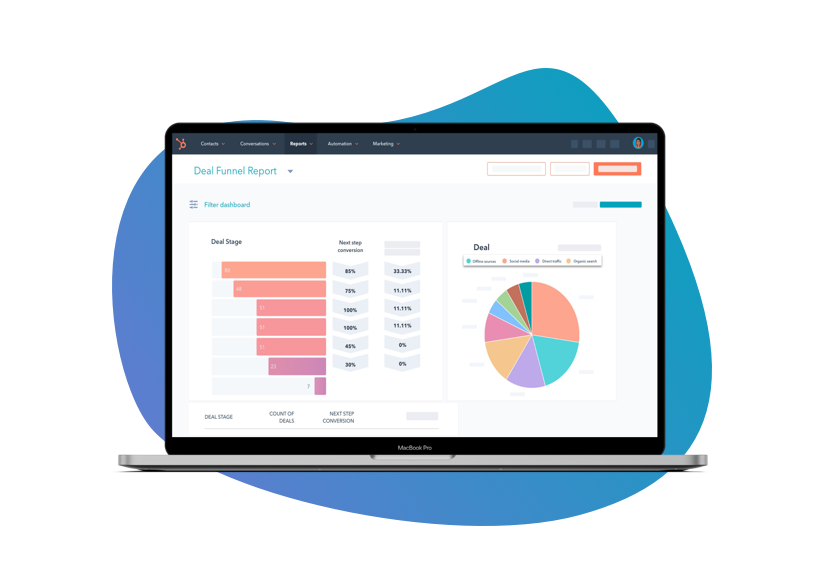
HubSpot Sales Hub is a comprehensive sales tracking solution that offers a range of features, including lead generation, email marketing, and sales automation. The software is designed to help businesses manage the entire sales process, from attracting leads to closing deals. Key features include deal management, lead nurturing, and reporting and analytics.
2. Zoho CRM
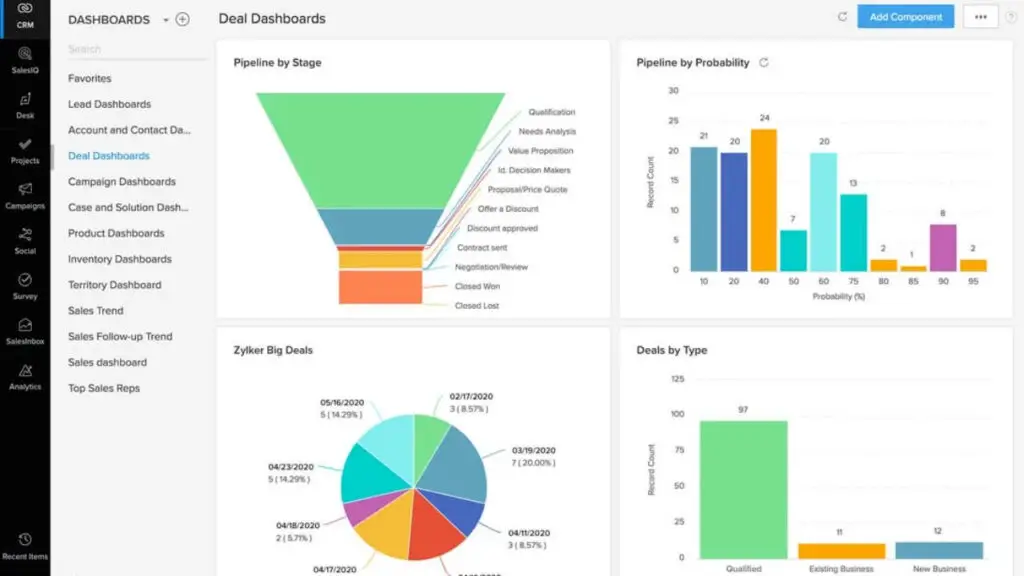
Zoho CRM is a user-friendly option for small businesses that is designed to be easy to use. Key features include contact management, lead management, and sales automation. The software also offers a range of integrations with other Zoho products, making it a good choice for businesses that already use Zoho’s suite of tools.
3. Pipedrive
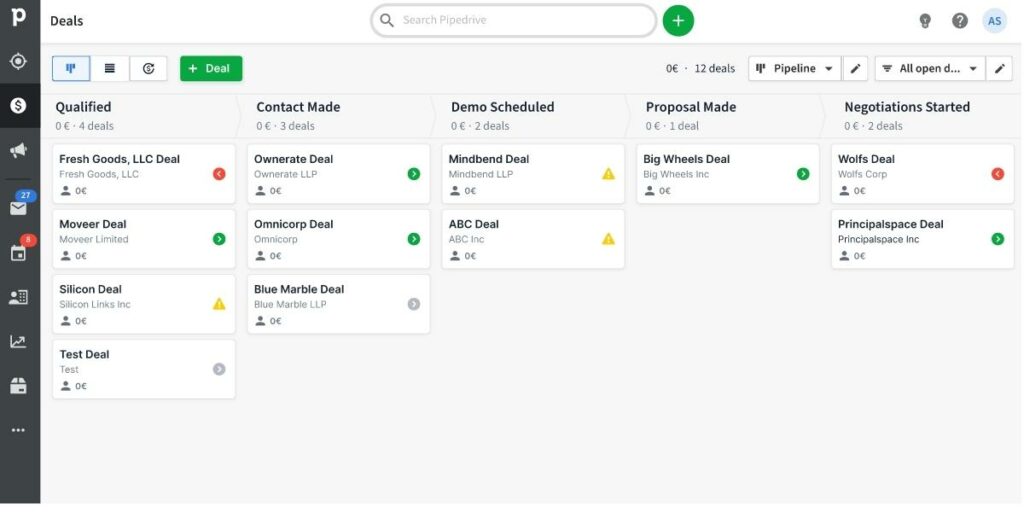
Pipedrive is a visual sales management tool that easily tracks your deals and boosts productivity. The software offers a range of features, including deal management, lead nurturing, and reporting and analytics. Pipedrive is designed to be used by businesses of all sizes, from startups to larger enterprises. Key features include deal forecasting, task automation, and pipeline visualization.
4. Close CRM
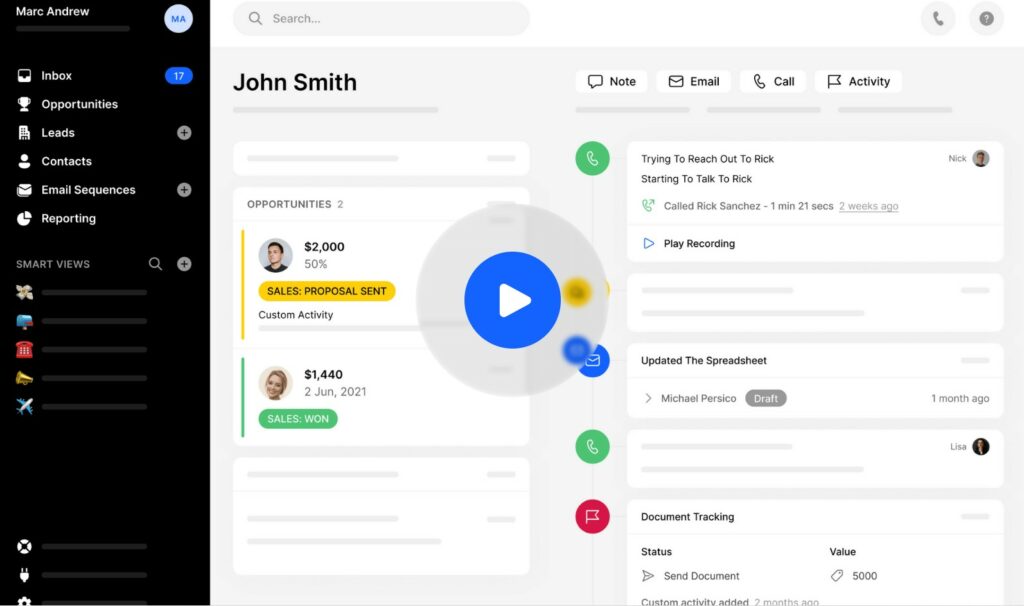
Close CRM is a simple yet powerful sales management solution that offers a straightforward approach to sales management. The software is designed to be used by businesses of all sizes, from small startups to larger enterprises. Key features include lead management, deal tracking, and reporting and analytics. Close CRM also offers a range of integrations with other tools.
Comparison of the Top 4 Sales Tracking Software
- Hubspot Sales Hub: An all-in-one sales and marketing platform that offers sales tracking, email tracking, and lead management.
- Zoho CRM: A comprehensive CRM solution that offers sales tracking, reporting, and forecasting, as well as advanced analytics and lead management.
- Pipedrive: A sales management tool that helps teams to close deals faster. It features a simple and intuitive interface and advanced sales reporting and forecasting.
- Close CRM offers a simple yet powerful approach to sales management, focusing on keeping things straightforward.
Features Sales Tracking Apps Should Have
There are a lot of sales tracking apps on the market, but not all of them have the features you need to track your sales efficiently. So before you buy a sales tracking app, make sure it has the following features:
→ Sales Pipeline Management
- Visual representation of the sales pipeline
- Ability to track the progress of each stage in the pipeline
- Option to create custom pipeline stages
A visual representation of the sales pipeline is crucial for sales tracking and management. A good sales tracking app should provide a clear and comprehensive view of the sales pipeline, showing the progress of each stage.
The app should also allow you to track the progress of each stage in the pipeline, so you can see how deals are moving forward and identify any bottlenecks in your sales process.
Additionally, having the option to create custom pipeline stages will allow you to tailor the sales tracking app to your specific sales process.
→ Sales Performance Metrics
- Real-time sales data analysis
- Customizable dashboard with key performance metrics
- Option to set goals and track progress toward them
Measuring sales performance is crucial for improving sales productivity and performance. A good sales tracking app should provide real-time sales data analysis and customizable dashboards with key performance metrics, such as deal size, win rate, and conversion rate.
Additionally, having the option to set goals and track progress towards them will allow you to set targets for your sales team and monitor their progress, making it easier to identify areas for improvement and fine-tune your sales strategy.
→ Sales Reporting
- Ability to generate reports on sales performance and pipeline
- Option to customize reports
- Ability to export reports in various formats
Generating accurate and comprehensive reports on sales performance and pipeline is an essential aspect of sales tracking. A good sales tracking app should have the ability to generate reports on sales performance and pipeline, giving you a clear picture of your sales activity.
The app should also provide options to customize the reports so that you can tailor them to your specific needs. Lastly, the ability to export reports in various formats, such as PDF or Excel, will allow you to share the reports with your team and stakeholders easily.
→ Sales Forecasting
- Ability to forecast future sales based on historical sales data
- Option to customize forecasting parameters
- Ability to view and compare different forecasting scenarios
Accurate sales forecasting is key to planning and budgeting for future sales activity. A good sales tracking app should be able to forecast future sales based on historical sales data, allowing you to make informed decisions about your sales strategy.
The app should also provide options to customize the forecasting parameters so that you can fine-tune your forecasting based on your specific sales process. Also, the ability to view and compare different forecasting scenarios will allow you to see the impact of changes in your sales pipeline and make informed decisions about your sales strategy.
Closing Thoughts
Sales monitoring is an integral part of any business. By tracking sales performance, companies can identify problem areas and take immediate action.
Several different KPIs can be used to measure a sales team’s success. These KPIs help businesses understand which products or services are most popular with customers, how well their marketing efforts are working, and more.
Keeping track of these metrics can help businesses maintain healthy sales levels and ensure customer satisfaction.
What is Monitoring Sales?
What are KPIs in Sales?
Why is it important to track sales KPIs?
What are the key features of Sales Tracking Softwares?
– Contact Management
– Lead Management
– Opportunity Management
– Sales Reporting and Analytics
– Automated Workflows





